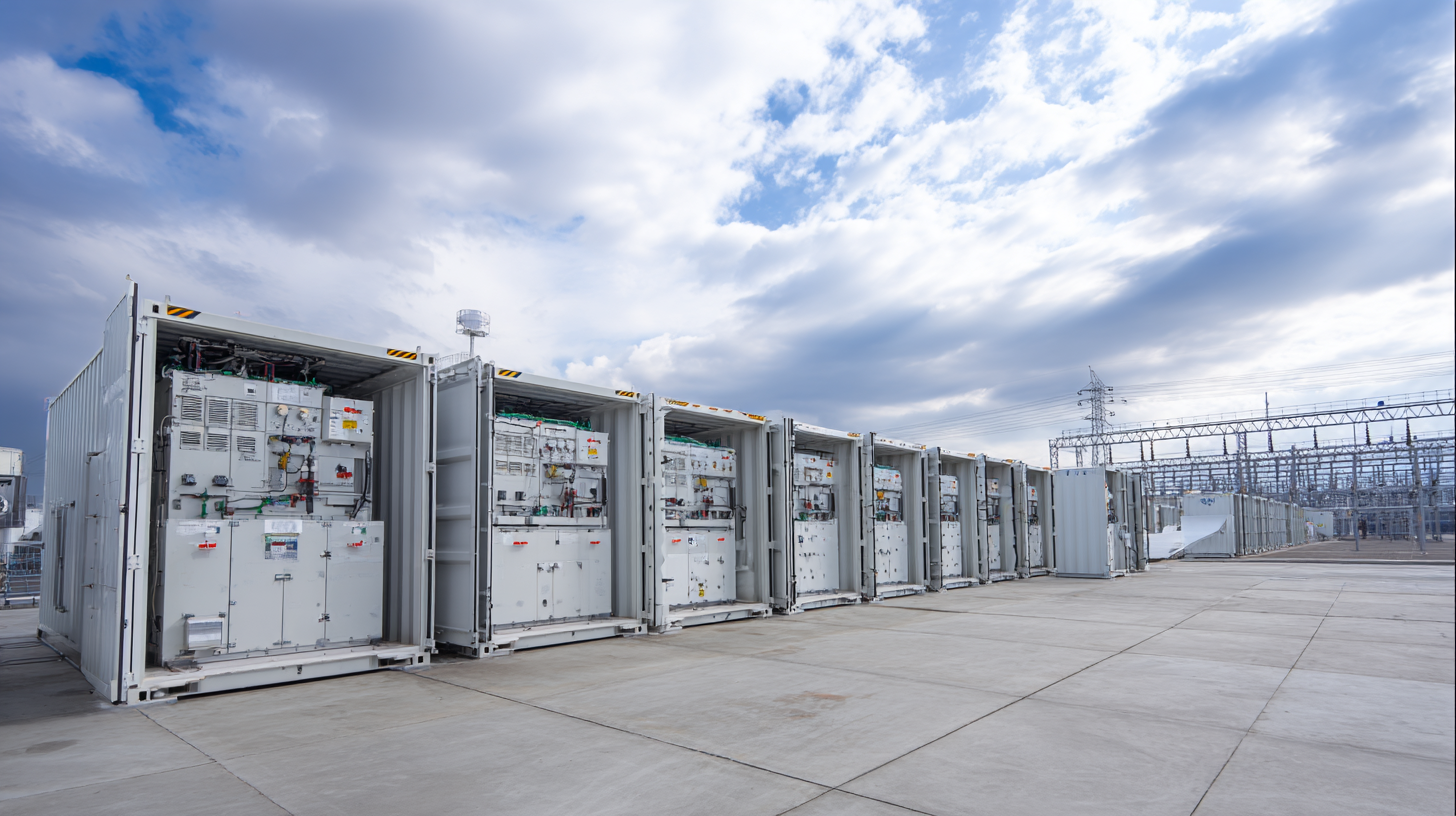Top Strategies for Optimizing Large Lithium Ion Batteries Performance in Industrial Applications
In recent years, the industrial sector has increasingly turned to large lithium ion batteries as a reliable solution for energy storage and power supply, particularly in applications such as renewable energy integration, electric vehicles, and grid stability. According to a report from Allied Market Research, the global market for lithium ion batteries is projected to reach $129.3 billion by 2027, growing at a compound annual growth rate (CAGR) of 17.3% from 2020. This surge emphasizes the critical need for optimization strategies to enhance the performance and longevity of large lithium ion batteries, which are pivotal for meeting energy demands and reducing carbon footprints. By implementing effective strategies, industries can not only improve battery efficiency but also maximize return on investment, thereby leveraging these advanced energy storage solutions to drive sustainable growth.
Key Factors Influencing Lithium Ion Battery Efficiency in Industrial Settings
In industrial applications, the efficiency of large lithium-ion batteries is influenced by several key factors. First and foremost, temperature management plays a critical role in battery performance. High temperatures can accelerate chemical reactions within the battery, leading to faster degradation and reduced cycle life. Conversely, low temperatures can result in increased internal resistance, limiting the battery's output and efficiency. Implementing a reliable thermal management system ensures optimal performance and longevity of the batteries, addressing the challenges posed by varying operational conditions.
Another significant factor is the battery management system (BMS), which optimizes the charging and discharging cycles while monitoring battery health. An advanced BMS can balance the charge among individual cells, preventing overcharging and deep discharging, which are detrimental to battery health. Furthermore, incorporating predictive maintenance practices using data analytics can help identify potential issues before they lead to failures, minimizing downtime and maximizing operational efficiency.
Lastly, the choice of materials and the design of the battery also greatly impact overall performance. Innovative electrode materials can enhance energy density and charge rates, while thoughtful engineering can improve the battery’s thermal stability and cycle efficiency. As industries continue to adopt large lithium-ion batteries for energy storage and electric vehicle applications, focusing on these key factors will be crucial for optimizing performance and achieving sustainable operational goals.

Advanced Thermal Management Techniques for Battery Performance Enhancement
Effective thermal management is critical in enhancing the performance of lithium-ion batteries, particularly in industrial applications and electric vehicles. Advanced techniques utilizing phase change materials (PCMs) have emerged as a promising solution to manage heat generation within battery systems. Recent studies highlight various modification methods for PCMs, enhancing their efficacy in thermal management. By incorporating innovations such as helical fin designs and hybrid formulations, researchers are improving heat dissipation capabilities, which are essential for maintaining optimal battery functions under load.
Moreover, the integration of materials like nanoparticles into PCM systems fosters better phase transition behavior, crucial for stabilizing temperatures during charge and discharge cycles. The application of these advanced cooling techniques not only optimizes battery performance but also contributes to the overall safety and longevity of lithium-ion batteries. As the demand for energy storage solutions continues to rise, focusing on these innovative thermal management strategies will be key in driving the efficiency of large-scale battery systems in industrial use cases.
Utilizing Smart Monitoring Systems for Real-Time Battery Optimization
As industries increasingly rely on large lithium-ion batteries for energy storage and electric mobility,
real-time monitoring systems
have become pivotal for optimizing battery performance. According to a report by the International Energy Agency (IEA),
the global demand for lithium-ion batteries is projected to reach 2,000 GWh by 2030,
highlighting the urgent need for efficient battery management.
Smart monitoring systems equipped with advanced analytics can track critical parameters such as temperature,
voltage, and state of charge, allowing for instant adjustments that maximize battery life and performance.
Implementing these monitoring technologies not only enhances operational efficiency but also boosts safety and reliability.
A study by the U.S. Department of Energy found that real-time battery management could reduce the risk of
thermal runaway—a significant concern in industrial settings—by up to 30%.
Furthermore, with predictive maintenance capabilities, industries can anticipate potential failures and address them proactively,
resulting in reduced downtime and maintenance costs.
By harnessing data-driven insights, companies can ensure
optimal charging cycles and extend the lifespan of battery systems, ultimately driving sustainability and reducing
their carbon footprint in line with global energy transition goals.
Charging Protocols: Maximizing Lifespan and Efficiency of Large Batteries
Charging protocols play a critical role in maximizing the lifespan and efficiency of large lithium-ion batteries used in industrial applications. According to a report from the International Energy Agency (IEA), the efficiency of lithium-ion battery charging can significantly affect overall system performance, with optimal charging strategies potentially enhancing energy retention by up to 30%. By implementing advanced charging techniques such as Constant Current/Constant Voltage (CC/CV) protocols, industrial operators can minimize voltage fluctuations, decreasing the risk of overheating and prolonging battery life.

Moreover, data from the Department of Energy (DOE) indicates that utilizing smart charging algorithms can optimize charge times and reduce energy waste. For instance, a study revealed that adopting temperature-aware charging methodologies can lower internal resistance and improve charge efficiency by around 15%. By monitoring the battery's state-of-charge and adjusting the charging rate according to real-time data, industries can ensure that their large batteries operate at peak performance while extending their operational lifespan. Investing in these smart charging protocols is not just a technical upgrade; it translates into substantial cost savings and sustainability gains for businesses relying on large-scale battery systems.
Implementing Regular Maintenance and Testing for Optimal Battery Health
Regular maintenance and testing are crucial for ensuring the optimal health of
large lithium-ion batteries used in industrial applications.
These batteries are a significant investment and their performance directly impacts
productivity and efficiency. Establishing a routine maintenance schedule can help
identify potential issues before they escalate into costly problems.
This includes regular inspections of connections, cleaning terminals, and monitoring
for any signs of wear or damage.
Moreover, systematic testing of battery performance is essential for maintaining
their longevity. Implementing capacity tests
and cycle assessments allows facilities
to track the overall health and efficiency of the battery systems. By analyzing data
from these tests, operators can make informed decisions about when to replace components,
ultimately minimizing downtime and driving long-term savings. Additionally, adopting
advanced monitoring technologies can enhance real-time insights into battery performance,
allowing for proactive interventions that promote battery life and functional reliability.






